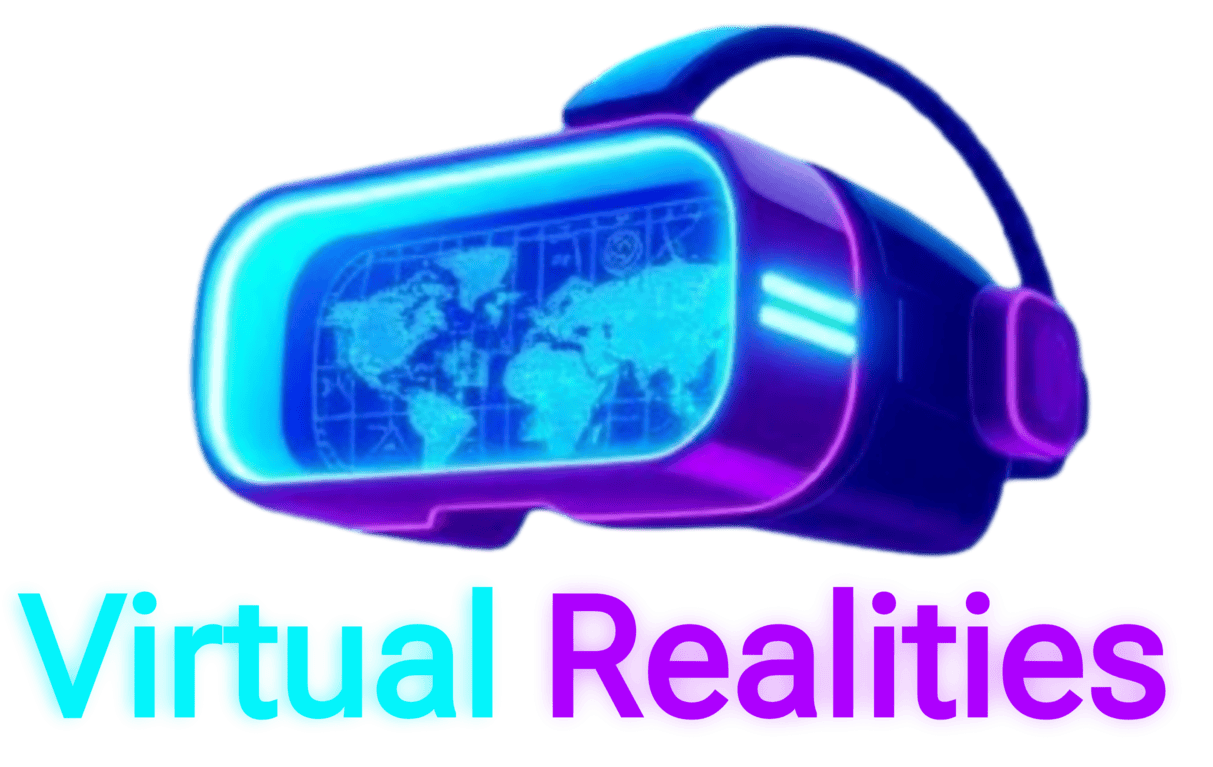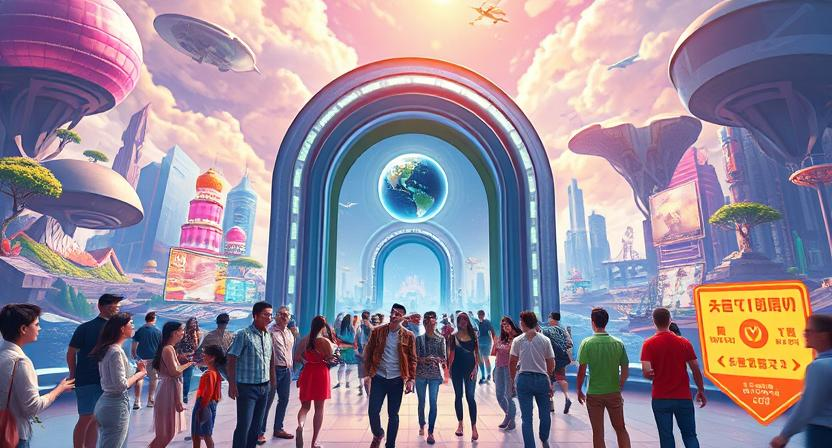What is the Metaverse?

The Metaverse is a virtual universe where individuals can interact with each other and digital environments in real-time. It is a collective space comprised of interconnected virtual worlds, augmented reality, and the internet, blurring the lines between physical and digital realities. In the Metaverse, users can create personalized avatars, explore diverse landscapes, participate in activities, and engage with a wide range of experiences.
Imagine a vast digital realm where people can socialize, work, play games, attend events, and even buy virtual property. The Metaverse offers a dynamic and immersive environment where users can escape the constraints of the physical world and unleash their creativity. As technology continues to advance, the possibilities within the Metaverse are expanding, opening up new avenues for communication, collaboration, and entertainment.
Understanding the concept of the Metaverse
The concept of the Metaverse refers to a collective virtual space where individuals can interact with each other and digital environments in real-time. It is a vast network of interconnected virtual worlds that are typically accessed through computer-generated environments. In the Metaverse, users can create customizable avatars, explore different virtual spaces, participate in activities, and engage with other users through various means like chat, voice communication, and virtual events.
This unique digital realm blurs the line between the physical and virtual worlds, offering endless possibilities for creativity, social interaction, entertainment, and even economic opportunities. As technology continues to advance, the Metaverse is becoming increasingly sophisticated, immersive, and interconnected. It opens up new avenues for communication, collaboration, and self-expression, attracting a diverse range of users from gamers and artists to entrepreneurs and educators.
The history of the Metaverse
The concept of the Metaverse was first coined by science fiction writer Neal Stephenson in his 1992 novel “Snow Crash.” In the book, the Metaverse was a virtual reality space where users could interact with each other and digital environments in a three-dimensional world. This early depiction laid the foundation for the development of virtual worlds and online platforms that strive to create immersive digital experiences for users.
Following the popularity of “Snow Crash,” other virtual worlds and online games began to emerge, such as Second Life and World of Warcraft, which further fueled the idea of a shared, interconnected virtual space. As technology advanced, so did the capabilities of these platforms, leading to the creation of more sophisticated virtual environments and collaborative spaces that blurred the lines between the physical and digital worlds.
Key players in the Metaverse
In the rapidly evolving landscape of the Metaverse, several prominent companies have emerged as key players leading the way in virtual experiences. Meta, formerly known as Facebook, positions itself as a major force in shaping the Metaverse with its ambitious vision and investments in virtual and augmented reality technologies. The company’s Meta Quest 2 VR headset has gained significant traction among users, offering a gateway into immersive virtual worlds.
Another significant player in the Metaverse is Roblox, a platform that allows users to create, share, and play games in a virtual environment. With a user base predominantly composed of children and teenagers, Roblox has become a powerhouse in the virtual world space, providing a platform for creativity, social interaction, and entertainment. As virtual worlds continue to expand and evolve, companies like Meta and Roblox are at the forefront of driving innovation and shaping the future of the Metaverse.
Different platforms in the Metaverse
Two significant platforms that have gained immense popularity in the Metaverse are Decentraland and Roblox. Decentraland is a decentralized virtual world where users can create, explore, and monetize their content through the use of non-fungible tokens (NFTs). It offers a unique experience by allowing users to own their digital assets and participate in virtual events and social interactions.
On the other hand, Roblox is a user-generated gaming platform that also serves as a social space for players to interact and create their games. With a vast library of games created by users, Roblox has become a hub for virtual experiences and entertainment. Its immersive environment and diverse content make it a favorite among both gamers and creators looking to explore different virtual worlds within the Metaverse.
Getting started in the Metaverse

When diving into the Metaverse for the first time, it’s essential to choose a platform that aligns with your interests and goals. Whether you’re looking to connect with others, explore virtual worlds, or engage in virtual events, selecting the right platform will shape your overall experience. Consider factors such as community size, content variety, and ease of navigation when making your decision.
After selecting a platform, the next step is to create your avatar. This digital representation of yourself will be your virtual identity in the Metaverse. From choosing your appearance to customizing your clothing and accessories, crafting your avatar allows you to express your personality and style in the virtual world. Take your time to personalize your avatar to make it uniquely yours before embarking on your Metaverse journey.
Creating your avatar
When it comes to creating your avatar in the Metaverse, the possibilities are endless. From choosing your appearance, clothes, and accessories to customizing every detail of your virtual self, you have the freedom to express your personality and creativity. Whether you prefer a realistic representation of yourself or want to explore a completely different identity, the avatar creation process allows you to bring your imagination to life in the virtual world.
Designing your avatar is not just about visual aesthetics; it is also an opportunity to consider how you want to present yourself to others in the Metaverse. Your avatar can reflect your interests, aspirations, and even your mood on a given day. By carefully selecting each element, from hairstyle to skin tone to facial features, you can craft a digital persona that resonates with who you are or who you aspire to be in the virtual realm.
Navigating virtual worlds
Navigating virtual worlds can be both exciting and challenging for newcomers. As you immerse yourself in these digital environments, remember to familiarize yourself with the controls and interface of the platform you are using. Take your time to explore different virtual landscapes and get a feel for how to move around and interact with the surroundings. Practice moving your avatar, manipulating objects, and understanding the dynamics of the virtual world to enhance your overall experience.
In addition to exploring on your own, consider joining virtual tours or guided experiences to gain a better understanding of the vast virtual realms that are available to you. Engage with other users to learn tips and tricks for efficient navigation and discover hidden gems within the virtual world. By actively participating and connecting with the community, you can expand your knowledge and skills in navigating virtual worlds while also forging valuable relationships with fellow digital explorers.
Interacting with others in the Metaverse
In the Metaverse, interacting with others plays a crucial role in creating a sense of community and connection. Whether it’s chatting with friends, collaborating on projects, or attending virtual events, the ability to engage with other users adds depth and richness to the overall experience. Through real-time communication tools such as voice chat, text messaging, and virtual gestures, users can interact with one another in a way that closely mimics real-life interactions.
Moreover, virtual worlds in the Metaverse offer a multitude of social activities that allow users to engage with others in fun and unique ways. From playing virtual games and sports to attending virtual concerts and parties, there are endless opportunities to socialize and connect with people from around the globe. Building relationships, networking, and fostering a sense of camaraderie are key aspects of interacting with others in the Metaverse, making it a dynamic and engaging environment for social interaction.
Customizing your virtual space
When it comes to customizing your virtual space in the Metaverse, the possibilities are endless. From choosing the color scheme of your virtual home to selecting the furniture and decor that best reflects your style, the ability to personalize your virtual space is a key aspect of creating a unique and immersive experience. Many virtual world platforms offer a wide range of customization options, allowing users to express themselves creatively and design their virtual environments to suit their preferences.
In addition to visual customization, users can also add interactive elements to their virtual spaces, such as virtual pets, games, and virtual assistants. The ability to personalize every aspect of your virtual environment not only enhances your experience in the Metaverse but also allows you to create a space that truly feels like your own. Whether you prefer a minimalist and modern design or a cozy and eclectic style, customizing your virtual space gives you the freedom to design a digital world that is a reflection of your personality and tastes.
Earning and spending virtual currency

In the Metaverse, virtual currency plays a significant role in facilitating transactions and interactions. Users have the opportunity to earn virtual currency through various activities such as completing tasks, participating in virtual events, or selling virtual goods and services. Once acquired, this virtual currency can be spent on purchasing virtual assets, customizing avatars, accessing exclusive content, or participating in virtual economies within different platforms. The ability to earn and spend virtual currency adds a layer of gamification and incentive for users to engage actively in the Metaverse.
Virtual currency in the Metaverse operates similarly to traditional currency in the real world, with exchange rates and fluctuating values. Users can engage in trading and investments to potentially grow their virtual wealth or acquire rare and valuable virtual assets. The concept of virtual currency not only enables transactions within virtual environments but also bridges the gap between the digital and physical worlds, offering new opportunities for creators, businesses, and individuals to monetize their presence and activities in the Metaverse.
Exploring virtual events and experiences
In the Metaverse, virtual events and experiences offer a wide array of opportunities to engage with others and immerse oneself in unique environments. From concerts and art exhibitions to virtual tourism and gaming tournaments, the range of activities available is vast and diverse. Users can participate in live events, explore virtual replicas of real-world locations, or even create their own events for others to join.
These virtual experiences provide a sense of escapism and allow individuals to connect with people from around the world without leaving their homes. Whether attending a virtual conference for work, exploring a virtual museum, or attending a live performance in a virtual venue, the Metaverse offers a limitless space for creativity and social interaction. Users can not only consume content but also actively participate in shaping the virtual world around them, making each event a dynamic and engaging experience.
Joining virtual communities
Virtual communities play a crucial role in the Metaverse, offering a sense of belonging and connection to individuals from diverse backgrounds. Joining these communities allows participants to engage in shared interests, activities, and discussions with like-minded individuals in virtual spaces. Whether it’s a community centered around gaming, art, music, or any other niche interest, finding a group that aligns with your passions can enhance your overall experience in the digital realm.
By participating in virtual communities, individuals can broaden their networks, learn from others, and collaborate on projects or activities within the Metaverse. These communities provide a platform for members to exchange ideas, seek support, and foster relationships in a global digital environment. Additionally, joining virtual communities can open up opportunities for personal growth, skill development, and the exploration of new perspectives and experiences in the ever-expanding virtual universe.
Participating in virtual economy
In the Metaverse, participating in the virtual economy offers unique opportunities for individuals to engage in various financial transactions within digital environments. Users can buy, sell, and trade virtual goods and services using virtual currencies, opening up new avenues for economic interactions and transactions. This virtual economy mirrors aspects of the real-world economy, with its own market dynamics and value systems that influence the exchange of virtual assets.
As part of the virtual economy, individuals can engage in online commerce by setting up virtual storefronts, offering services, or creating and selling digital content. Additionally, users can participate in virtual asset exchanges, invest in digital assets, and even earn a living through virtual economic activities. The virtual economy in the Metaverse is constantly evolving, driven by user interactions, innovations in technology, and the growing popularity of virtual experiences.
Challenges and opportunities in the Metaverse
While the Metaverse offers a multitude of exciting opportunities for users to engage in virtual experiences and interactions, it also presents several challenges that need to be addressed. One significant challenge is the issue of digital security and privacy within these virtual worlds. As users increasingly share personal information and engage in transactions within the Metaverse, ensuring data protection and preventing cyber threats become crucial.
Furthermore, the growth of the Metaverse raises concerns about digital addiction and its potential impact on mental health. As individuals spend more time immersed in virtual environments, there is a risk of excessive screen time and detachment from reality. Balancing the benefits of the Metaverse with the need for healthy boundaries and moderation is essential to prevent negative consequences on well-being.
Privacy and security concerns in the Metaverse

Privacy and security are two critical aspects that have sparked concerns in the rapidly evolving landscape of the Metaverse. With the vast amount of personal data being generated and shared within virtual environments, ensuring the protection of users’ information has become increasingly challenging.
One major worry revolves around the potential for data breaches and cyberattacks within the Metaverse, as hackers may exploit vulnerabilities in the virtual infrastructure to access sensitive information. Furthermore, the permanence of data stored in the virtual world raises questions about user privacy and the ownership of digital assets.
The future of the Metaverse
As we peer into the future of the Metaverse, it becomes clear that this digital realm is poised for unprecedented growth and expansion. With advancements in technology and a shift towards more immersive experiences, the Metaverse is set to become an integral part of our daily lives. As virtual worlds become increasingly interconnected and lifelike, the lines between the physical and digital worlds will continue to blur, offering endless possibilities for entertainment, communication, and collaboration.
With the rise of virtual reality and augmented reality technologies, the scope of the Metaverse is set to transcend beyond gaming and entertainment, paving the way for new avenues in education, healthcare, business, and beyond. As more industries embrace the potential of the Metaverse, we can expect to see innovative applications that revolutionize how we work, socialize, and interact with the world around us. The future of the Metaverse holds the promise of a truly immersive and interconnected digital landscape, where the limits of reality are defined only by our imagination.
Tips for a successful Metaverse experience
When diving into the Metaverse, it’s important to remember that authenticity is key. Be genuine in your interactions, build meaningful connections, and contribute positively to the virtual worlds you explore. Embrace the diversity of experiences and perspectives you encounter, and approach each interaction with an open mind and respect.
Furthermore, don’t hesitate to experiment and try new things in the Metaverse. Whether it’s exploring different virtual environments, engaging in virtual events, or creating unique digital content, don’t be afraid to step out of your comfort zone. Embrace the opportunity to learn, grow, and expand your horizons in this dynamic digital realm.
Resources for further exploration
For those looking to delve deeper into the vast realm of the Metaverse, there are numerous resources available to aid in your exploration. Online forums and communities dedicated to the Metaverse offer a wealth of information, insights, and discussions on various aspects of virtual worlds. These platforms provide a space for individuals to connect, share experiences, and seek guidance from seasoned users.
In addition, virtual events and conferences centered around the Metaverse are excellent opportunities to gain firsthand knowledge and engage with industry experts. By attending these gatherings, participants can stay up-to-date on the latest developments, trends, and innovations shaping the Metaverse landscape. Furthermore, educational programs and workshops focusing on virtual reality, augmented reality, and related technologies can equip individuals with the skills and knowledge needed to navigate and thrive in the evolving Metaverse ecosystem.
Conclusion: Embracing the potential of the Metaverse
In conclusion, the Metaverse holds vast potential for reshaping the way we interact, work, and play in the digital world. As technology continues to advance, the boundaries between the physical and virtual realms are becoming increasingly blurred, offering new opportunities for creativity and connectivity. Embracing the Metaverse means embracing a future where immersive experiences and limitless possibilities await those willing to explore and engage with this evolving digital landscape.
By recognizing the potential of the Metaverse and actively participating in its development, individuals and businesses can tap into a new dimension of innovation and collaboration. As we navigate the complexities and opportunities of this virtual universe, it is essential to approach with an open mind, curiosity, and a willingness to adapt to this transformative digital environment. Embracing the potential of the Metaverse means embracing a future where imagination knows no bounds and where the digital and physical worlds seamlessly merge to create a reality limited only by our creativity and innovation.


